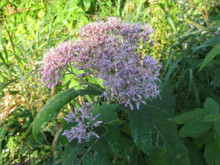 Loading... Please wait...
Loading... Please wait...- Home
- SEEDS
- SEED MIXES
- BUY PLANTS
- Info Request
-
Educational Videos
- Greenhouse Transplanting Demonstration
- Native Seed Cleaning demonstration at Ion Exchange Native Seed and Plant Nursery
- Attracting Butterflies
- Bidens - Bidens cernua Harvest Video
- Big Blue Stem Harvest
- Butterfly Milkweed Video
- Button Blazingstar - Liatris aspera Video
- Buttonbush - Cephalanthus occidentalis Video
- Canada Anemone - Anemone canadensis Harvest Video
- Cardinal Flower - Lobelia cardinalis Video
- Control Burn - Wildflower Field
- Cream Gentian - Gentiana flavida
- Culver's Root - Veronicastrum virginicum Video
- Cup Plant - Silphium perfoliatum Video
- Dormant Seeding | Planting
- Earthyman's Favorite Wildflowers Video
- Eco-Friendly Golf Course Seed Mix
- Floating Islands
- Fringed Loosestrife - Lysimachia ciliata Video
- Giant Yellow Hyssop - Agastache nepetoides Video
- Indiangrass - Sorghastrum nutans Video
- Iowa Prairie Partner Program
- Leadplant - Amorpha canescens (Potted) Video
- Meadow Blazingstar - Liatris ligulistylis
- Midland Shooting Stars - Dodecatheon meadii Video
- Native Plant Nursery Field Irrigation Experiment
- Nodding Onion - Allium cernuum Video
- Ohio spiderwort - Tradescantia ohiensis Video
- Old Man's Beard - Clematis virginiana blooms Video
- Oxeye Sunflower - Heliopsis helianthoides Video
- Prairie Spiderwort - Tradescantia bracteata
- Purple Coneflower - Echinacea purpurea Video
- Rain Garden or Water Garden Video
- Rattlesnake Master - Eryngium yuccifolium Video
- Riverbank Stabilization - Wetland Plants
- Rose Mallow - Hibiscus militaris Video
- Rosinweed - Silphium integrifolium Video
- Royal Catchfly - Silene regia
- Showy Tick Trefoil - Desmodium canadense Video
- Sneezeweed - Helenium autumnale Video
- Swamp Betony - Pedicularis lanceolata Video
- Swamp Milkweed - Asclepias incarnata Video
- Sweet Blackeyed Susan - Rudbeckia subtomentosa Video
- Tall Coreopsis - Coreopsis tripteris Video
- Urban Butterfly Garden
- Wild Bergamot - Monarda fistulosa Video
- Wild Geranium - Geranium maculatum Harvest
- Wild Goldenglow - Rudbeckia lanciniata Video
- Wild Petunia - Ruellia humilis Harvest Video
- Woodland Knotweed - Polygonum virginianum Video
- Yellow Coneflower - Ratibida pinnata Video
- Blog
- Resources
- Policies
Contact Us
Phone:
563-419-0837
or 563-535-7231
Email:
hbright@ionXchange.com
Browse Products
Add to Wish List
You Recently Viewed...
Our Newsletter
Product Description
"Sweet Joe Pye Weed, Boneset, Gravel-root, Hempweed, Jopi Root, Jopi Weed, Kidney Root, King-of-the-Meadow, Queen-of-the-Meadow, Marsh Milkweed, Motherwort, Quillwort, Skunk Weed, Stink Trumpet Weed, Quillwort and others"
Greek, from the name of the King of Pontus, Eupator and the Latin purpureum for "purple".
Found throughout the Tallgrass Region at the edge of wet places where woodlands open into thickets and marshes. Blooms from July through September on erect stems to ten feet tall. Occasionally, the green stem is mottled with purple that shades to a deep purple at the leaf joints. When crushed or dried, the stem and leaves give off a vanilla-like odor. Flowers are tiny and grow in dome-like clusters up 8 inches across. Flowers are creamy white to pale pink or pale purple. Short petals and long stamens give them a frilly appearance
The astute reader will note that both E. maculatum and E. purpureum are called Joe Pye Weed. The main difference is in the flower heads with E. purpureum being more dome-shaped.
This plant is one of the great stories in Native American medicine. It is named after the east coast Native American, Joe Pye, a member of the Massachusetts Bay Colony, who used the plant to cure fevers. It is still used in parts of Appalachia to treat urinary disorders. Some mothers bathed their fretful childdren in a tea made from Joe Pye Weed to calm them down and bring on a restful sleep. Meskwaki men would nibble the leaves of this plant to ensure success while wooing chosen tribal maidens. We cannot report on the success of this particular usage.
| Sun Exposure | Savanna, Woodland |
| ,Soil Moisture | Wet Mesic, Mesic, Dry Mesic |
| Bloom Time |
Summer, Fall July, August, September |
| Bloom Color | Pink |
| Max Height | 7 feet |
| Wetland Code | UPL |
| Germ Code | C(30), G |
| Seeds Per Packet | 400 |
| Seeds Per Ounce | 420,000 |
Edible Uses: The roots have been burnt and their ashes used as salt to flavour foods.
Medicinal Uses: Gravel root was used by the native N. American Indians as a diaphoretic to induce perspiration and break a fever. The plant was quickly adopted by the white settlers and still finds a use in modern herbalism. The whole plant, but especially the root, is astringent, diuretic, nervine and tonic. It works particularly on the genito-urinary system and the uterus. Especially valuable as a diuretic and stimulant, as well as an astringent tonic, a tea made from the roots and leaves has been used to eliminate stones from the urinary tract, to treat urinary incontinence in children, cystitis, urethritis, impotence etc. It is also said to be helpful in treating rheumatism and gout by increasing the removal of waste from the kidneys. The leaves and flowering stems are harvested in the summer before the buds open and are dried for later use. The roots are harvested in the autumn and dried for later use.
Other Uses: The stems have been used as straws.
The fruits yield a pink or red textile dye.
Herbal Uses: Unknown












